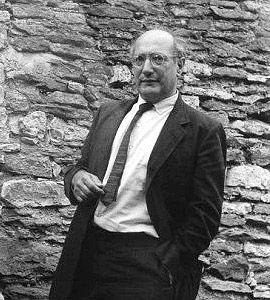Mark Rothko Death
Mark passed away on February 25, 1970 at the age of 66 in New York City, USA. Mark's cause of death was suicide.
When did Mark Rothko die?
February 25, 1970How did Mark Rothko die? What was the cause of death?
SuicideHow old was Mark Rothko when died?
66Where did Mark Rothko die? What was the location of death?
New York City, USA
Mark Rothko Birthday and Date of Death
Mark Rothko was born on September 25, 1903 and died on February 25, 1970. Mark was 66 years old at the time of death.
Birthday: September 25, 1903
Date of Death: February 25, 1970
Age at Death: 66
Mark Rothko - Biography
Mark Rothko (/ˈrɒθkoʊ/), born Markus Yakovlevich Rotkovich (Russian: Ма́ркус Я́ковлевич Ротко́вич, Latvian: Markuss Rotkovičs; September 25, 1903 – February 25, 1970), was an American painter of Russian Jewish descent. Although Rothko himself refused to adhere to any art movement, he is generally identified as an Abstract Expressionist. With Jackson Pollock and Willem de Kooning, he is one of the most famous postwar American artists.
Rothko received a second mural commission project, this time for a room of paintings for the penthouse of Harvard University's Holyoke Center. He made twenty-two sketches, from which ten wall-sized paintings on canvas were painted, six were brought to Cambridge, Massachusetts, and only five were hung: a triptych on one wall and opposite two individual panels. His aim was to create an environment for a public place. Harvard President Nathan Pusey, following an explanation of the religious symbology of the Triptych, had the paintings hung in January 1963, and later shown at the Guggenheim. During installation, Rothko found the paintings to be compromised by the room's lighting. Despite the installation of fiberglass shades, the paintings were all removed by 1979 and, due to the fugitive nature of some of the red pigments, in particular lithol red, were placed in dark storage and displayed only periodically. The murals were on display from November 16, 2014, to July 26, 2015, in the newly renovated Harvard Art Museums, for which the fading of the pigments has been compensated by using an innovative color projection system to illuminate the paintings.
In early 1968, Rothko was diagnosed with a mild aortic aneurysm. Ignoring doctor's orders, Rothko continued to drink and smoke heavily, avoided exercise, and maintained an unhealthy diet. "Highly nervous, thin, restless", was his friend Dore Ashton's description of Rothko at this time. However, he did follow the medical advice given not to paint pictures larger than a yard in height, and turned his attention to smaller, less physically strenuous formats, including acrylics on paper. Meanwhile, Rothko's marriage had become increasingly troubled, and his poor health and impotence resulting from the aneurysm compounded his feeling of estrangement in the relationship. Rothko and his wife Mell (1921–1970) separated on New Year's Day 1969, and he moved into his studio.
On February 25, 1970, Oliver Steindecker, Rothko's assistant, found the artist in his kitchen, lying dead on the floor in front of the sink, covered in blood. He overdosed on barbiturates, and cut an artery in his right arm with a razor blade. There was no suicide note. He was 66. The Seagram Murals arrived in London for display at the Tate Gallery on the day of his suicide.








